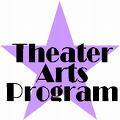
Theater Arts Reviews
|
Greek Theater Arts
Greek Theater Arts
The Greeks had denizens perfect in all kinds of trade and they had a habit of excelling in their respective fields irrespective of whatever constraints are presented to them. Although the Greeks were known to be great warriors and athletes they were also good in inspired fields such as theater, pottery and philosophy. Athens was the scholastic epicenter of ancient Greece and was named next the popular figure of wisdom, Athena. Theaters of Greece flourished during 500 - 300 BC which has an effect on theater arts till this date.
Theater was symbolized by two masks which represented the masks worn during comedy and tragedy. They also depicted the dual nature of life. The tragic mask had a painful and mourning expression and the comedy mask had a joyful and smiling expression.
Festivals were held to honor the theater arts. Every year at the Theater of Dionysia named after the Greek god of wine and fertility Dionysus, festival was held for ten days to please the gods. Writers and poets from all over Greek huddle to perform. The schedule consisted of plays based on tragedies or comedies which were followed by a short farce. It was from the poetry of Aristotle. He wrote songs, known as dithyrambs, to praise god Dionysus out of which tragic stories began evolved.
In 500 BC, greater theater art was discovered by Thespis. It involved a single actor playing various roles by wearing different masks to differentiate between the characters. Other than him slick were narrators and commentators on stage shield whom the actor used to collaborate. This type of theater arts was recognized as tragedy which meant goat skin in Greek. It was either named after the event of sacrificing goat to gods or abutting the goad skin worn by the performers. Competitions were being conducted in festival at theater of Dionysia. Thespis was the first known actor of ancient Greek.
Aeshylus, in 471 BC, introduced plays having two actors who interacted with each other using dialogue. A third actor was introduced by Sophocles in 468 BC and thus the plots plenty became complex. But each actor was to enact different characters wearing mask accordingly. The masks were so large that it covered the entire face of the actor including his hair. The mask was carved with care because that too many audibility of the actorís shout. These masks were trumped-up out of linen or cork, thatís the reason why the archeologist couldnít find a trace of them. The sculptured statues and paintings depicted actors wearing mask this was how the ammo was collected. Props werenít still were restrained from usage because the size of the theater were so large, it diminished the visibility of the spectators seated on higher levels. To make up for this, Pantomime was used by the actors. This also meant that the actors wore bright dresses and loud makeup to attract the attention of the audience. Along with that the actors wore high heeled boots and large gloves to make them more vividly visible. Stories not only revolved around Dionysus but also were based on divergent Greek chimerical characters.
The structure of the theater at that time was known due to Theatron. They were open - aired and were constructed on the slopes since the seating arrangement for the spectators was in the form of ascending circles. The theaters were designed such that the voice of the performers could reach the highest seated audience. In the theater at Epidaurus alone can hear the sound of a dropped pin from the highest rivalry. The three essential elements of the theater, in Greece, were orchestra or the platform, on which performance was done, the Skene, was a mansion which acted as the backstage as hale for the background of the play and the last element is the audience.
The audience and performers at all theaters were only men as at that juncture women were considered to be the downtrodden sect. The actors as well for the chorus could speak dialogue or even sing as required. Detailed costumes and strapping mask were worn while enacting the roles and was the trademark of Greek theater.
 |
 |
 |
Classification Based On Different Themes Arts
More Theater Arts Articles
... Jacopo Peri. It was reflected in the opera Euridice that was based on the story of Eurydice and Orpheus. When there were no dialogues during the performance, there were songs with music. This type of opera inspired many other writes, on of them was Claudio Monteverdi who wrote La Favola D Orfeo that had ...
Classification Based On Different Themes Arts
... opera only that the music played along with the songs is rock oriented. Fantasy is that genre where the hero enacts a fictitious story usually a happy one. Sometimes the characters have proxy supernatural powers. Plays where the story is being explained using body movement, gestures, dance, mime, and ...
... shocked. This created a clear line of separation between the audiences. This made Rameau to follow the existing rules. But this time he was opposed by the Italian counterparts who called him old-fashioned. This was when Rameau created a new opera genre known as opera Comique. Theater De I Opera-Comique ...
... both the tragic and sportive elements along with some education. This nowadays a reform which was promoted by Venice s Arcadian Academy. Metastasio was a part of this academy and his libertti became famous till the end of the eighteenth century in Italian opera. And this mixed with baroque opera was known ...

|
| Copyright © 2006-2012 Internet Marketing Tools, All Rights Reserved |